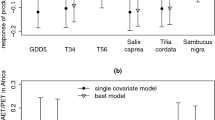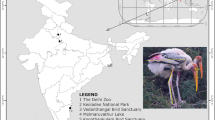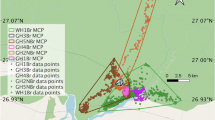Abstract
MR. AVELDON'S letter on this subject, in NATURE of May 3, calls, I think, for a few farther observations. He first criticises the statement that “the survival-mean must, on cessation of selection, fall to the birth-mean,” by showing that there are probably cases in nature in which the survival and birth-means may coincide, owing to the removal by selection of all individuals above and below the mean, they being approximately equal in number. This is, no doubt, the case with certain characters of a species, but probably never with all or even with most characters. Darwin states that in France and Germany white pigeons are killed off by kites, and that on the coast of Ireland blick fowls are also killed off by sea-eagles. These and other analogous facts render it probable that in many species of animals colour is kept to the inconspicuous and protective mean tint by the elimination of all individuals which vary much on either side of it, and thus, as regards colour, the birth-mean and the surrival-mean may be almost identical. But with many other characters this is not the case. In sheep, cattle, and horses it has been observed that when the larger lowland breeds are taken to bleak mountain regions they gradually dwindle in size, only the smaller and hardier of each generation surviving the severe winter and spring climate and the comparatively innutritious food. Here the elimination is clearly in one main direction; and the absence of this selection due to the transference of the whole body of such reduced individuals to a milder climate and better pastures, would no doubt lead to a slight increase of average size, indicating that the birth-mean had been above the survival-mean. So also in the case of the half-wild horses of Circassia, which are greatly exposed to attacks of wolves and to extreme vicissitudes of climate, swiftness, strength, wariness, and a hardy constitution must be kept at a high level of efficiency by the elimination of the less gifted in these qualities; so that here again the birth-mean must be below the survival-mean. In such cases as these there seems no difficulty in the fact that the mean characters do not change for many generations; for this is in accordance with Darwin's principle that natural selection “cannot produce absolute perfection, but only relative perfection.” When the average characters of a species have reached a point such that it can permanently maintain itself in a given area, then no further change will occur; but, the less efficient being constantly weeded out, the survivalmean will be necessarily a little above the birth-mean. Both means will, however, be sensibly permanent as long as the environment remains unchanged.
This is a preview of subscription content, access via your institution
Access options
Subscribe to this journal
Receive 51 print issues and online access
$199.00 per year
only $3.90 per issue
Buy this article
- Purchase on SpringerLink
- Instant access to full article PDF
Prices may be subject to local taxes which are calculated during checkout
Similar content being viewed by others
Rights and permissions
About this article
Cite this article
WALLACE, A. Panmixia and Natural Selection. Nature 50, 196–197 (1894). https://doi.org/10.1038/050196c0
Issue date:
DOI: https://doi.org/10.1038/050196c0
This article is cited by
-
William Bateson from Balanoglossus to Materials for the Study of Variation: The Transatlantic Roots of Discontinuity and the (un)naturalness of Selection
Journal of the History of Biology (2008)



